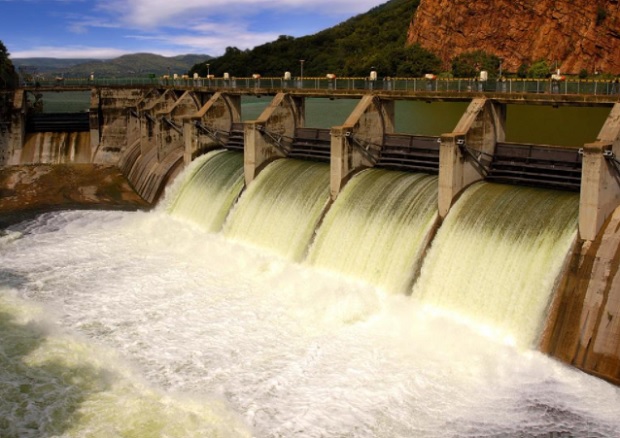The role of dams and renewable energies

Today, around 3800 km3 of fresh water is withdrawn annually from the world’s lakes, rivers and aquifers. This is twice the volume extracted 50 years ago. A growing population and a rising level of economic activity both increase human demand for water and water-related services. Development, technological change, income distribution and life-styles all affect the level of water demand. While, as the world is becoming more and more dependent on electricity and fossil fuels, the need to find less-destructive alternatives is becoming more urgent.
Instead of using a finite raw material, such as coal, that deplete the earth’s resources while adding toxic waste into the atmosphere, renewable energies seek to produce electricity in a way that can be sustained for generations to come. Hydro dams have long been considered renewable energy sources. Hydroelectric energy is a renewable energy source too, dependent upon the hydrologic cycle of water, which involves evaporation, precipitation and the flow of water due to gravity. In fact, accessing the energy from flowing waters has played an important role in the economic and social development.
Renewable energy (sources) or RES capture their energy from existing flows of energy, from on-going natural processes, such as sunshine, wind, flowing water, biological processes, and geothermal heat flows. Some benefits of this kind of energy include:
• Renewable energy is inexhaustible, and beyond construction and maintenance costs, free. It is less susceptible to market manipulation and supply shortages.
• Renewable energy technologies generate more jobs per kilowatt-hour than conventional energy technologies such as natural gas power plants.
• Renewable energy is environmentally friendly, creating no pollution at the point of generation.
Hydro dams are present in almost all regions of the globe and have played a key role in development for thousands of years. Many modern dams are multi-purpose – built primarily for irrigation, water supply, flood control, electric power and improvement of navigation. They also provide recreation, such as fishing and swimming and become refuges for fish and birds. In the last two centuries they have also played a key role in producing large-scale power and electricity. Dams also slow down streams and rivers so that the water does not carry away soil, thereby preventing erosion. Hydropower is the only renewable resource currently used on a large scale to generate electricity.
However, this potential is much greater than what is actually technically, economically, or environmentally feasible. Hydropower uses the energy of the hydrologic cycle, which is ultimately driven by the sun, making it an indirect form of solar energy. Energy contained in sunlight evaporates water from the ocean and deposits it on land in the form of rain and other forms of precipitation. Precipitation that is not absorbed by the ground runs off the land into the ocean via the world’s vast network of rivers to repeat the process. Hydroelectric systems provide the following general benefits:
• Hydroelectric energy is a continuously renewable electrical energy source.
• Hydroelectric energy is non-polluting – no heat or noxious gases are released.
• Hydroelectric energy has no fuel cost and with low operating and maintenance costs, it is essentially inflation proof.
• Hydroelectric energy technology is a proven technology that offers reliable and flexible operation.
• Hydroelectric stations have a long life and many existing stations have been in operation for more than half a century and are still operating efficiently.
• Hydropower station efficiencies of over 90% are achieved making it the most efficient of energy conversion technologies.
• Hydropower offers a means of responding within seconds to changes in load demand.
